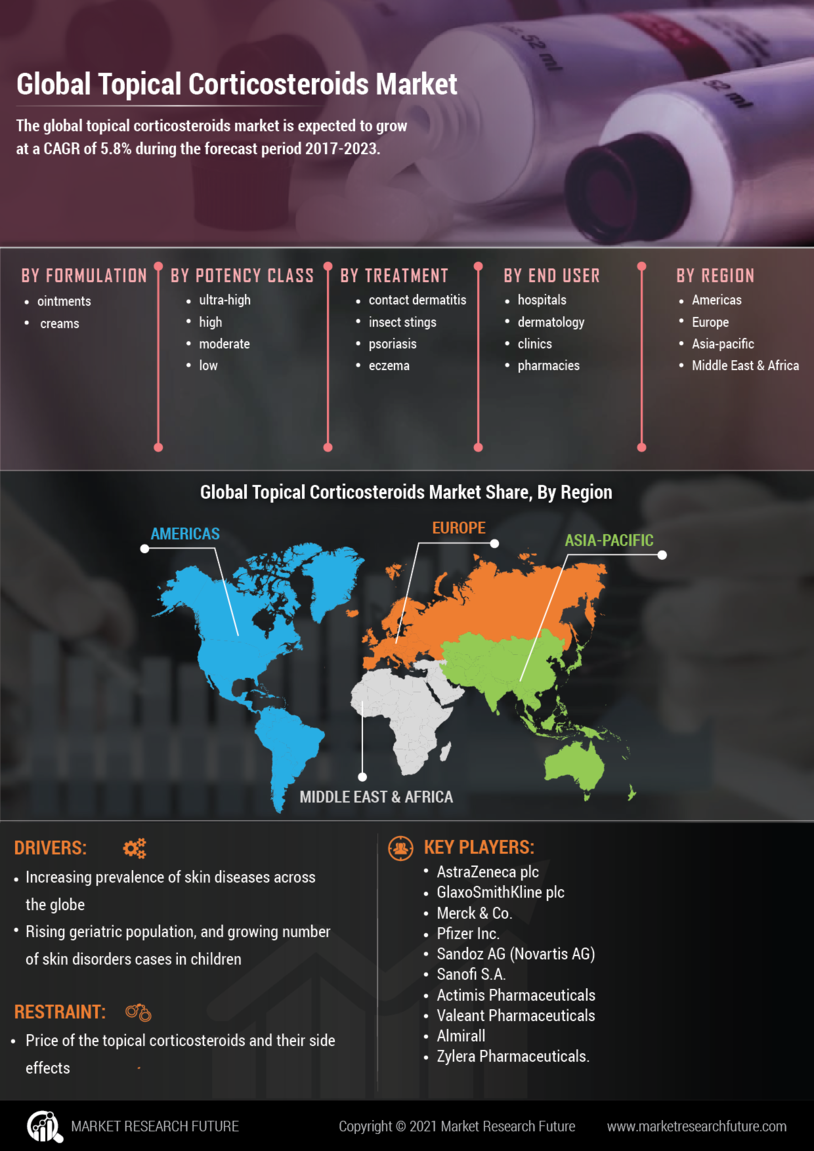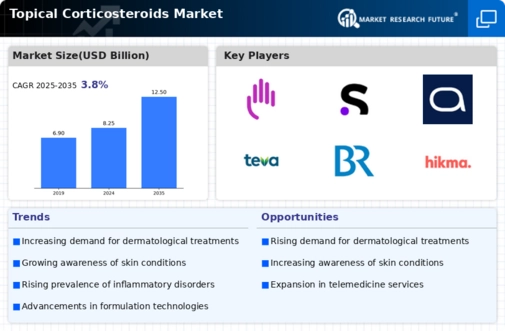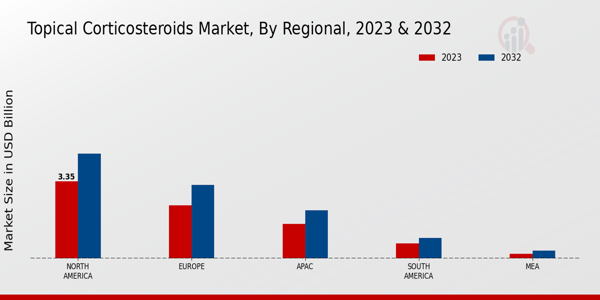The Topical Corticosteroids Market is characterized by intense competition, driven by ongoing innovation and the presence of well-established pharmaceutical companies. These companies are continually investing in research and development to enhance their product offerings and provide better therapeutic options for patients suffering from various dermatological conditions. The market is marked by a diverse range of corticosteroid products, differentiated by their potency, formulation, and delivery methods. Market players are also focused on expanding their geographic reach and developing strategies to strengthen their market presence, including strategic partnerships and collaborations.
This dynamic landscape is supported by a growing awareness of skin-related ailments and the increasing prevalence of conditions such as eczema, psoriasis, and dermatitis, which drive the demand for effective topical treatments.Bristol-Myers Squibb is recognized for its robust product portfolio in the Topical Corticosteroids Market, leveraging its extensive research capabilities to develop high-quality corticosteroid formulations. The company has established a strong market presence through consistent product innovation and a commitment to addressing unmet medical needs in dermatology.
Bristol-Myers Squibb's strengths include a deep understanding of the underlying mechanisms of skin disorders, leading to the development of effective therapeutic agents with improved safety profiles. Additionally, their dedication to patient education and support programs enhances the overall treatment experience, fostering brand loyalty among healthcare providers and patients alike. The company's strategic focus on expanding its dermatological offerings further solidifies its position in this competitive landscape.
Sanofi has established itself as a significant player in the Topical Corticosteroids Market thanks to its strong pipeline of dermatological products and commitment to enhancing patient care. The company benefits from a well-integrated global supply chain, which facilitates the efficient distribution of its corticosteroid therapies. Sanofi's strengths lie in its extensive research initiatives aimed at understanding dermatological conditions and the patient experience. Their engagement in cooperative clinical trials and strategic collaborations with research institutions contributes to the development of innovative formulations that meet diverse patient needs.
Furthermore, Sanofi promotes awareness campaigns that educate both healthcare professionals and patients about the benefits of topical corticosteroids, enhancing its brand visibility and fostering trust in its dermatological products.























Leave a Comment